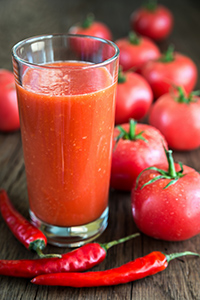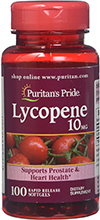Table of Contents
Before we get into the many health benefits of tomatoes, let’s learn more about this nutritious food. After potatoes, tomatoes are the most widespread plants of the botanical family Solanaceae. It is cultivated throughout the world. It was introduced to Europe by Spaniards who brought it from Peru and Mexico in the sixteenth century. However, it was more than 200 years before the tomato was accepted in France, Germany, and Northern Europe. The tomato’s similarity to the red fruit belladonna, a toxic plant of the same botanical family, led to the belief that it was poisonous. This vegetable was not wholly accepted in German and North American cuisine until the twentieth century.
The tomato was much better received in Southern Europe. From its arrival in the sixteenth century, it held a holy place in Spanish and Italian cuisine to such a degree that today, it is an essential part of the Mediterranean diet. Nutrition experts have revived the tomato. They view it as much more than an ingredient in sauces or salads. The health benefits of tomatoes work well on a variety of disorders. They have preventative properties on certain cancers, especially the prostate, making them a universally recognized medicinal food.

Tomato Nutritional Facts
Fresh tomatoes comprise a lot of water (almost 94 percent of their weight). They have insignificant amounts of carbohydrates (3.54 percent), proteins (0.85 percent), and fats (0.33 percent). Its carbohydrates are generated mainly from glucose and fructose. Together, these nutrients provide 21 kcal/100 grams, one of the lowest amounts of any plant-based food, lower even than asparagus (23 kcal/100 grams). However, the tomato’s nutritional and therapeutic value is in its rich vitamin and mineral content and non-nutritive properties.
In terms of vitamins, the most copious is vitamin C (19.1 mg/100 grams), less than the orange (53.2 mg/100 grams), but enough to make the tomato effective against scurvy. A 100-g tomato supplies a third of the adult’s daily need for this vitamin. Vitamins B1, B2, B6, folates, and niacin are all in substantial amounts. Provitamin A is present (62 ug RE/100 grams), although much less than in carrots (2,813 ug RE/100 grams) or mango (389 ug RE/100 grams).
Most notable among its minerals are potassium (222mg/100 grams), iron (0.45 mg/100 grams), magnesium, and phosphorus. Tomatoes are a reliable source of iron since they contain about nine times as much as milk (0.45 gm/100 grams) per weight, although three times less than eggs (1.44 mg/100 grams). However surprising though it may seem, an average-sized tomato weighing 180 grams contains the same amount of iron as an average egg (about 60 grams).
Non-nutritive components are substances in foods, which, although not considered nutrients traditionally, play essential roles within the body. The most noteworthy of these in the tomato are:
VEGETABLE FIBER: Tomatoes contain a small amount (1.1 percent) of soluble fiber in their pulp, particularly in the mucilage surrounding the seeds. This fiber contributes to the tomato’s cholesterol-reducing and laxative effects.
ORGANIC ACIDS: Malic and oxalic contribute to the tomato’s distinctive flavor. As the tomato ripens, the strength of these acids weakens, and its sugar content increases. Despite the acidic taste resulting from these acid substances, the tomato has the same impact as the lemon: It has an alkalizing influence on the blood, urine, and organic tissues. It comprises many more alkalizing materials (mineral salts) than acids.
LYCOPENE: This is a form of vegetable pigment belonging to the group of carotenoids that lends tomatoes their usual red color. In contrast to beta-carotene, lycopene does not convert into vitamin A. Because of this, lycopene was thought to have no physiological importance within the body. At Heinrich-Heine University in Dusseldorf, Germany, a center of tomato lycopene research, the following conclusions have been reached:
- Lycopene usually is present in human blood (0.5 umol per liter of plasma). Together with beta-carotene, it is the most plentiful carotenoid in the human body.
- Lycopene is also located in the testicles, the prostate, and the suprarenal glands.
- Lycopene is a highly potent antioxidant that prevents the deterioration caused by free radicals produced in cell DNA.
- Lycopene intervenes in the mechanism that controls cellular growth. Without its existence, cells replicate more disorderly.
Health Benefits of Tomatoes
Thanks to their composition, tomatoes are particularly indicated in the following cases:
Health benefits of tomatoes (PROSTATE CONDITIONS): Studies at Harvard University show that men who regularly eat fresh tomatoes and tomato sauce or juice are at a decreased risk of prostate cancer. This fact is easy to explain, considering that tomatoes are the richest food source of lycopene. This carotenoid protects the cells of the prostate from oxidation and abnormal growth. Regular tomato consumption is essential in preventing prostate cancer, one of the most common cancers among males.

Considering the established impact of lycopene on prostatic tissue, it may be determined that regular tomato consumption promotes proper prostate function overall. In addition to preventing cancerous degeneration of prostate cells, tomatoes can also reduce excessive growth (benign adenoma or hypertrophy) of the prostate, which is so common in men beyond the age of fifty.
Health benefits of tomatoes (DEPURANT): Tomatoes are remarkable blood alkalizers that neutralize and help eliminate metabolic waste products, most of which are acidic. They are also diuretics, thus assisting the work of the kidneys. Their regular consumption is highly advised to “cleanse” the blood in case of gout (excess uric acid), kidney failure with a rise in blood urea, or chronic occurrence of toxins in the body because of a diet rich in animal products and meats.
Health benefits of tomatoes (COMPROMISED IMMUNE SYSTEM): Because of their richness in vitamins, minerals, and antioxidant carotenoids, tomatoes naturally stimulate the immune system. They increase the body’s infection-fighting capabilities, finally eliminating infectious agents (contrary to common belief, antibiotics are not responsible for this).
Health benefits of tomatoes (ARTERIOSCLEROSIS): Because of their antioxidant effect, tomatoes inhibit the oxidation of the cholesterol transported by low-density lipoproteins, which causes the narrowing and hardening of the arteries associated with arteriosclerosis. Tomatoes are beneficial as a prophylactic for all who experience circulatory system disorders, including angina and heart attack.
Health benefits of tomatoes (CANCEROUS DISORDERS): It has been noted that tomato consumption protects against prostate cancer. Studies in Italy show that regular tomato consumption protects from mouth, esophagus, stomach, colon, and rectum cancers. Mediterranean food is highly protective against all types of digestive tract cancers.
Tomatoes and Oxalic Acid
For many years, tomatoes were eliminated from the diets of those with kidney stones because of their oxalic acid content. This substance and calcium form insoluble salts (calcium oxalate), precipitating as calculi or stones.
However, there is no reason for removing tomatoes from the diets of kidney patients. Their oxalic acid content is shallow (5.3 mg/100 grams), similar to many other foods, and lower than lettuce (17 mg/100 grams), tea (83 mg/100 grams), or spinach (779 mg/100 grams). Tomatoes increase urine output and purify the blood, which aids kidney function.
Tomato Scientific Facts

- Scientific name: Solanum Lycopersicum L.
- Scientific synonym: Lycopersicon esculentum Mill.
- French: Tomate.
- Spanish: Tomate.
- German: Tomate.
- Description: Aggregate fruit of the tomato, a herbaceous plant of the botanical family Solanaceae. They may be red, green, or yellow.
- Environment: Tomatoes grow wild in Peru and Ecuador. They are grown worldwide. However, the best specimens are grown in temperate, sunny climates.
Warning
Regardless of its color, tomatoes should be ripe since unripe specimens may contain small amounts of solanine, an alkaloid that can produce headaches and digestive disturbances.
How to Use and Prepare Tomatoes
- RAW: This is the healthiest way to eat tomatoes.
- FRIED: Fried tomatoes are tasty but somewhat difficult to digest for those with weak stomachs.
- JUICE and TOMATO SAUCE: These are rich in vitamin C and mineral salts. However, industrially prepared products typically contain many salts and other additives that may provoke allergic reactions.
Frequently Asked Questions
Beyond Vitamin C: What other key nutrients contribute to the health benefits of tomatoes?
Tomatoes are packed with more than just vitamin C. They’re a good source of potassium (important for heart health and blood pressure regulation), vitamin K1 (significant for blood clotting and bone health), and folate (essential for cell function and especially important during pregnancy).
I’ve heard about lycopene. How does this antioxidant in tomatoes specifically benefit health?
Lycopene is a powerful antioxidant liable for the red color of tomatoes. Research suggests it plays a role in:
1. Heart Health: Lycopene may help lower “bad” LDL cholesterol and reduce blood pressure, potentially decreasing the risk of heart disease.
2. Cancer Prevention: Some studies indicate that lycopene may help protect against specific cancers, including prostate cancer.
3. Skin Protection: Lycopene may offer some protection against the sun’s harmful UV rays.
Can the benefits of tomatoes really impact my brain health?
Yes, there’s emerging research linking tomato consumption to potential brain health benefits. Lycopene is thought to have neuroprotective properties, potentially helping to prevent cognitive decline and conditions like Alzheimer’s disease.
Are there specific compounds in tomatoes that can help with inflammation?
Tomatoes contain several anti-inflammatory compounds, including lycopene and beta-carotene. These may help reduce chronic inflammation, a factor in many chronic diseases.
How do the health benefits change when they’re cooked versus raw?
Interestingly, cooking tomatoes can increase the availability of lycopene, making it easier for the body to absorb. However, some water-soluble vitamins like vitamin C may be slightly reduced through cooking. Enjoying tomatoes, both raw and cooked, can offer a variety of health benefits.
I have type 2 diabetes. Can including tomatoes in my diet be beneficial?
Some studies indicate that the antioxidants in tomatoes, particularly lycopene, may help improve insulin sensitivity and blood sugar in folks with type II diabetes. However, more research is needed in this area.
I’ve read that tomatoes might help with eye health. Is this true?
Tomatoes contain lutein and zeaxanthin, antioxidants that accumulate in the retina and may help guard against age-related macular degeneration (AMD), a principal cause of vision loss.
Are the health benefits of tomatoes the same for everyone?
While tomatoes are generally healthy, some people may have allergies or sensitivities. If you experience any adverse reactions after eating tomatoes, consult your doctor.
Are there any potential downsides to eating a lot of tomatoes?
For most people, tomatoes are safe and healthy to eat in moderation. However, excessive consumption could potentially lead to digestive issues or interact with certain medications. If you have concerns, talk to your doctor.
What creative ways to incorporate more tomatoes into my diet to reap their health benefits?
1. Add fresh tomatoes to salads, sandwiches, and wraps.
2. Blend tomatoes into sauces, soups, and stews.
3. Roast tomatoes to concentrate their flavor and nutrients.
4. Enjoy tomato juice (low sodium) for a refreshing beverage.
DISCLAIMER: All content on this website is presented solely for educational and informational objectives. Do not rely on the information provided as a replacement for advice, diagnosis, or treatment from a qualified medical expert. If you are pregnant, nursing, or have any preexisting medical concerns, talk to your doctor before using any herbal or natural medicines.
REFERENCES
- George D. Pamplona-Roger, M.D. “Encyclopedia of Foods and Their Healing Power.” George D. Pamplona-Roger, M.D. Encyclopedia of Foods and Their Healing Power. Trans. Annette Melgosa. Vol. 2. Chai Wan: Editorial Safeliz, 2005. 275, 276, 277. Print. [health benefits of tomatoes]
- Healthline – Tomatoes 101: Nutrition Facts and Health Benefits: https://www.healthline.com/nutrition/foods/tomatoes
- WebMD: https://www.webmd.com/diet/health-benefits-tomatoes
- Researchers look at tomato health benefits: https://www.thepacker.com/news/industry/researchers-look-tomato-health-benefits
Last update on 2024-07-26 / Affiliate links / Images from Amazon Product Advertising API






